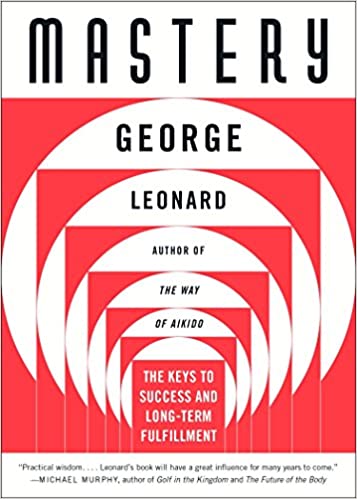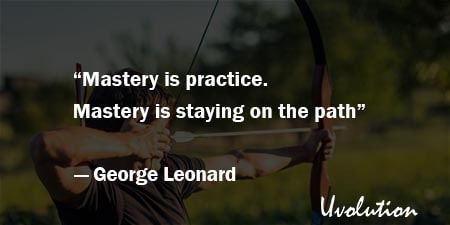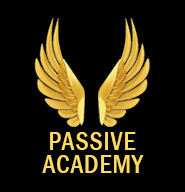Mastery by George Leonard Book Summary
The Book in 1 Sentences
Mastery: The Keys to Success and Long-Term Fulfillment
“We fail to realize that mastery is not about perfection. It’s about a process, a journey. The master is the one who stays on the path day after day, year after year. The master is the one who is willing to try, and fail, and try again, for as long as he or she lives.” ~ George Leonard
9 BIG Ideas
Mastery Book Summary
1. The Dabbler. The Obsessive. The Hacker
“We all aspire to mastery, but the path is always long and sometimes rocky, and it promises no
quick pay off. So we look for other paths, each of which attracts a different person.”
And those three other paths? The Dabbler. The Obsessive. And the Hacker.
a. The Dabbler
“The Dabbler approaches each new sport, career opportunity, or relationship with enormous enthusiasm. He or she loves the rituals involved in getting started, the spiffy equipment, the lingo, the shine of newness.
‘When he makes his first spurt of progress in a new sport, for example, the Dabbler is overjoyed. He demonstrates his form to family, friends, and people he meets on the street. He can’t wait for the next lesson. The falloff from his first peak comes as a shock. The plateau that follows is unacceptable if not incomprehensible. His enthusiasm quickly wanes. He starts missing lessons.
“This really isn’t the right sport for him. It’s too competitive, noncompetitive, aggressive, nonaggressive, boring, dangerous, whatever. He tells everyone that it just doesn’t fulfill his unique needs. Starting another sport gives the Dabbler a chance to replay the scenario of starting up. Maybe he’ll make it to the second plateau this time, maybe not. Then it’s on to something else.
“The same thing applies to a career. The Dabbler loves new jobs, new offices, new colleagues. He sees opportunities at every turn. He salivates over projected earnings. He delights in signs of progress, each of which he reports to his family and friends. Uh oh, there’s that plateau again. Maybe this job isn’t right for him after all. It’s time to start looking around. The Dabbler has a long resume…
b. The Obsessive
“The Obsessive is a bottom line type of person, not one to settle for second best. He or she knows results are what count, and it doesn’t matter how you get them, just so you get them fast. In fact, he wants to get the stroke just right during the very first lesson. He stays after class talking to the instructor. He asks what books and tapes he can buy to help him make progress faster. (He leans toward the listener when he talks. His energy is up front when he walks.)
“The Obsessive starts out by making robust progress. His first spurt is just what he expected. But when he inevitably regresses and finds himself on a plateau, he simply won’t accept it. He redoubles his effort. He pushes himself mercilessly. He refuses to accept his boss’s and colleagues’ counsel of moderation. He works all night at the office, he’s tempted to take shortcuts for the sake of quick results.
“American corporate managers have by and large joined the cult of the bottom line; their profile is often that of the Obsessive. They strive mightily to keep the profit curve angled upward, even if that means sacrificing research and development, long-term planning, patient product development, and plant investment…
“Somehow, in whatever he is doing, the Obsessive manages for a while to keep making brief spurts of upward progress, followed by sharp declines — a jagged ride toward a sure fall. When the fall occurs, the Obsessive is likely to get hurt…
c. The Hacker
“The Hacker has a different attitude. After sort of getting the hang of a thing, he or she is willing to stay on the plateau indefinitely. He doesn’t mind skipping stages essential to the development of mastery if he can just go out and hack around with fellow hackers. He’s the physician or teacher who doesn’t bother going to professional meetings, the tennis player who develops a solid forehand and figures he can make do with a ragged backhand. At work, he only does enough to get by, leaves on time or early, takes every break, talks instead of doing his job, and wonders why he doesn’t get promoted…
“The Hacker looks at marriage or living together not as an opportunity for learning and development, but as a comfortable refuge from the uncertainties of the outside world. He or she is willing to settle for static monogamy, an arrangement in which both partners have clearly defined and unchanging roles, and in which marriage is primarily an economic and domestic institution.
“This traditional arrangement sometimes works well enough, but in today’s world two partners are rarely willing to live indefinitely on an unchanging plateau. When your tennis partner starts improving his or her game and you don’t, the game eventually breaks up. The same thing applies to relationships.
“The categories are obviously not quite this neat. You can be a Dabbler in love and a master in art. You can be on the path of mastery on your job and a Hacker on the golf course — or vice versa. Even in the same field, you can sometimes be on the path of mastery, sometimes an Obsessive, and so on. But the basic patterns tend to prevail, both reflecting and shaping your performance, your character, your destiny.”
2. Practice Diligently
“How do you best move toward mastery? To put it simply, you practice diligently, but you practice primarily for the sake of the practice itself.”
“At the heart of it, mastery is practice. Mastery is staying on the path.”
3. Love The Plateau!
“Goals and contingencies, as I’ve said, are important. But they exist in the future and the past, beyond the pale of the sensory realm.
Practice, the path of mastery, exists only in the present. You can see it, hear it, smell it, feel it.
To love the plateau is to love the eternal now, to enjoy the inevitable spurts of progress and the fruits of accomplishment, then serenely to accept the new plateau that waits just beyond them. To love the plateau is to love what is most essential and enduring in your life.”
Leonard tells us about his process of discovering joy in the plateaus of his aikido practice—he was thinking: “Oh boy. Another plateau. Good. I can just stay on it and keep practicing. Sooner or later, there’ll be another spurt.” “It was one of the warmest moments on my journey.”
“Perhaps the best you can hope for on the master’s journey, whether your art be management or marriage, badminton or ballet—is to cultivate the mind and heart from the beginning and at every stage along the way. For the master, surrender means there are no experts. There are only learners.”
4. A Practice (as a noun)
“A practice (as a noun) can be anything you practice on a regular basis as an integral part of your life—not in order to gain something else, but for its own sake…
For a master, the rewards gained along the way are fine, but they are not the main reason for the journey. Ultimately, the master and the master’s path are one. And if the traveler is fortunate—that is, if the path is complex and profound enough—the destination is two miles farther away for every mile he or she travels.”
“Consistency of practice is the mark of the master.”
5. Willingness to Surrender
“The courage of a master is measured by his or her willingness to surrender.”
Seneca also says: “You can only acquire it successfully if you cease to feel any sense of shame.” And: “You cannot, I repeat, successfully acquire it and preserve your modesty at the same time.”
6. Intentionality (Vision)
“It joins old words with new—character, willpower, attitude, imagining, the mental game—but what I’m calling intentionality, however you look at it, is an essential to take along on the master’s journey.”
Leonard shares this great quote from Arnold Schwarzenegger: “All I know, is that the first step is to create the vision, because when you see the vision there—the beautiful vision—that creates the ‘want power.’ For example, my wanting to be Mr. Universe came about because I saw myself so clearly, being up there on stage and winning.”
7. How to Deal with the Resistance to Change
1. “Be aware of the way homeostasis works… don’t panic or give up at the first sign of trouble.”
2. “Be willing to negotiate with your resistance to change… The fine art of playing the edge in this case involves a willingness to take one step back for every two forward, sometimes vice versa.”
3. “Develop a support system.”
4. “Follow a regular practice.”
5. “Dedicate yourself to lifelong learning.”
William James says: “Most people never run far enough on their first wind to find out they’ve got a second. Give your dreams all you’ve got and you’ll be amazed at the energy that comes out of you.”
8. Keep Your Eyes on The Path
“It’s easy to get on the path of mastery. The real challenge lies in staying on it.”
“Obsessive goal orientation. As pointed out numerous times in this book, the desire of most people today for quick, sure, and highly visible results is perhaps the deadliest enemy of mastery.”
Russell Simmons-in his great book Do You!- says: “I know some people say ‘Keep your eyes on the prize,’ but I disagree. When your eyes are stuck on the prize, you’re going to keep stumbling and crashing into things. If you really want to get ahead, you’ve got to keep your eyes focused on the path.”
“But the real juice of life, whether it be sweet or bitter, is to be found not nearly so much in the products of our efforts as in the process of living itself, in how it feels to be alive.”
9. Tips for Mastery
“A human being is the kind of machine that wears out from lack of use. There are limits, of course, and we do need healthful rest and relaxation, but for the most part we gain energy by using energy… It might well be that all of us possess enormous stores of potential energy, more than we could ever hope to use.”
Here are some tips for mastery:
• Set priorities and make decisions. He says: “Indecision leads to inaction, which leads to low energy, depression, despair.”
• Take action, he says: “It’s instructive to watch the immediate surge of clarity and energy during training that comes from the simplest act of writing one’s name on a notice.”
• Get on the path of mastery and stay on it. He says: “Much of the world’s depression and discontent… can ultimately be traced to our unused energy, our untapped potential.”
“Could all of us reclaim lost hours of our lives by making everything—the commonplace along with the extraordinary—a part of our practice?”
That was my QUICK summary of the great book Mastery by George Leonard. If you’re interested, get your copy. There is a HUGE amount of life-changing ideas in this book, and we’ve only touched on a tiny bit of it.
Buy The Book: Mastery by George Leonard

GET Blinkist 7 Days FREE Trial
3000+ Book Summaries
(Audio and Text)







